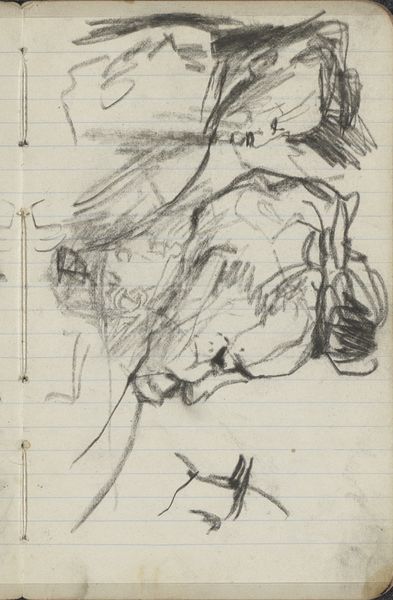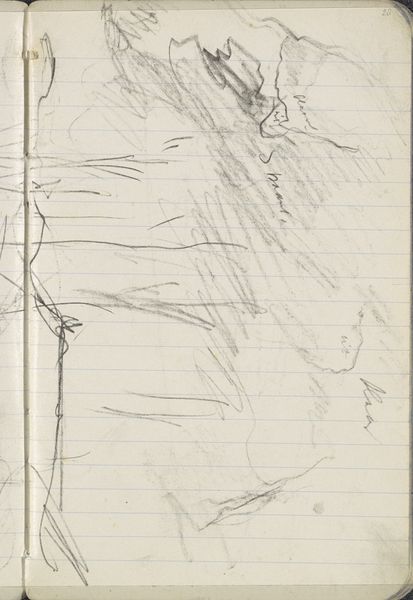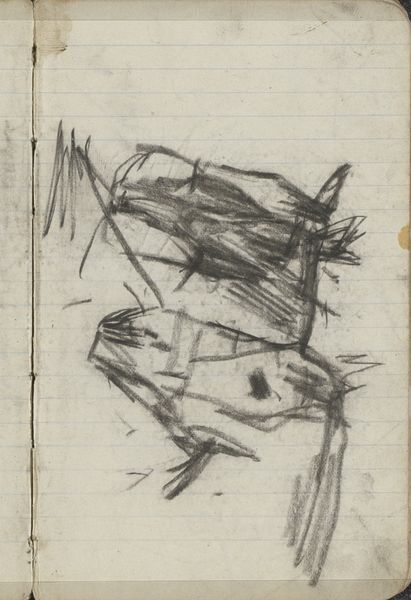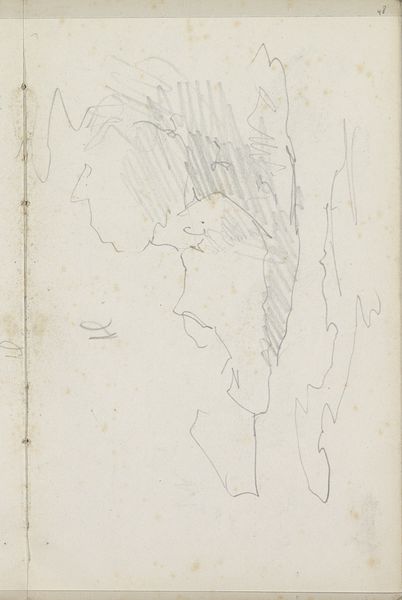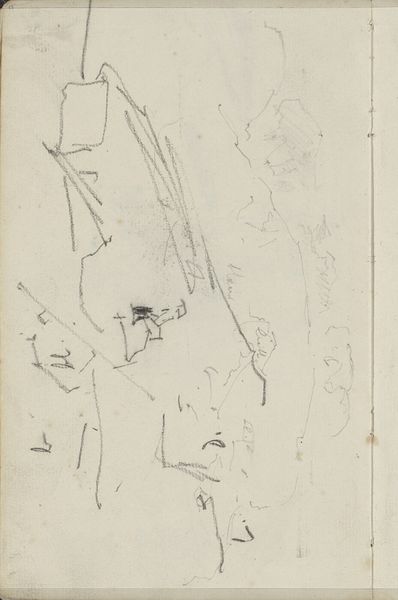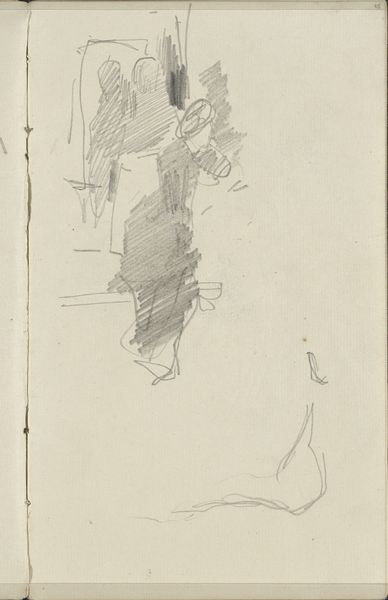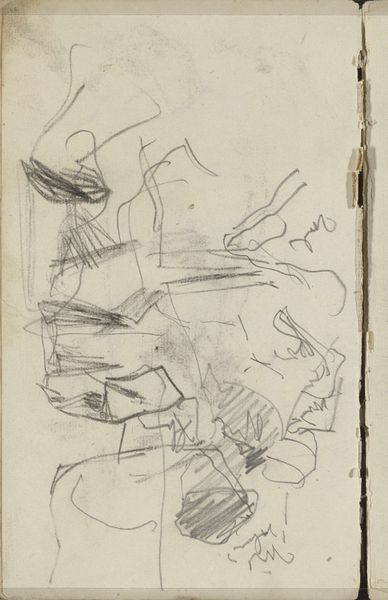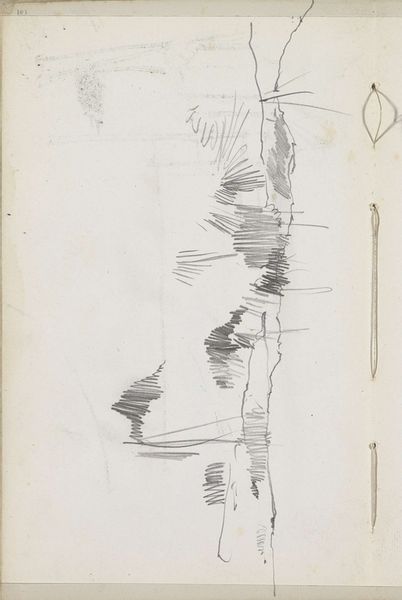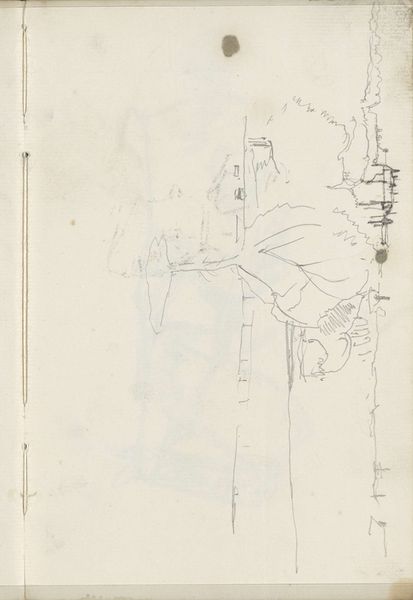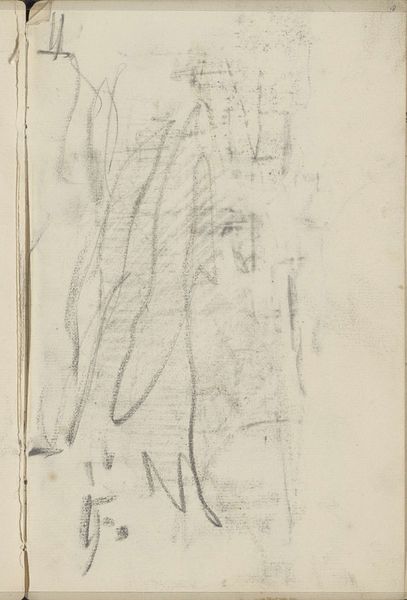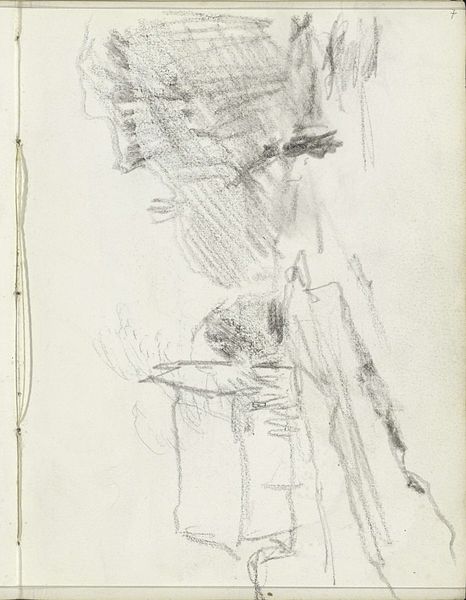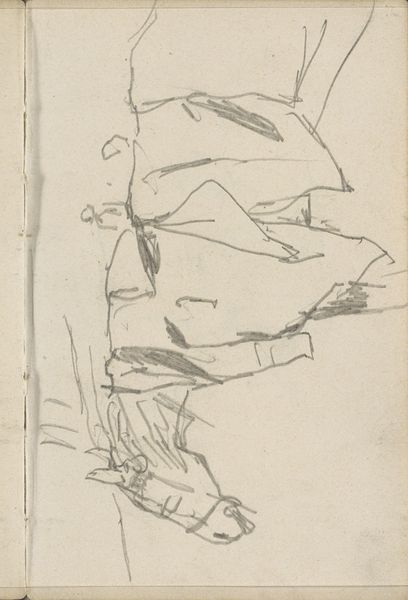
Copyright: Rijks Museum: Open Domain
Curator: Here we have "Horse with Bridle," a pencil and charcoal drawing on paper crafted between 1896 and 1897 by George Hendrik Breitner. Editor: Oh, wow, it feels… incomplete, almost like a fleeting thought captured in graphite. I see this horse, but it's shrouded in a haze. The sketchy quality gives it a vulnerable kind of presence. Curator: Indeed. Breitner, a key figure in Amsterdam Impressionism, often used drawing as a tool to quickly capture the essence of his subjects. His work offers compelling insight into the urban experience of the era. Think about the rise of the modern city, the changing relationship between humans and animals... Editor: Makes me wonder, what was Breitner thinking? The composition seems so direct and without ceremony. It feels unmediated. This could be anywhere – the light, the composition, they don’t provide enough details to locate the scene specifically. This only heightens the feeling of a captured thought! Curator: It’s possible this drawing reflects the artist’s understanding of the equine plight at the end of the 19th century. These working horses, subjected to carrying the booming capitalism in European cities, were eventually victims of their time. Did Breitner want to capture the animal's suffering as part of a wider movement criticizing capitalism's destructive progress? Editor: It really could be about that—or perhaps Breitner was drawn to the challenge of quickly suggesting movement, strength and energy, right? I almost get a romantic vision in it too. It certainly isn't a pretty portrait of an animal. Curator: You're right, the ambiguity allows for multiple readings. Breitner certainly plays with Romantic conventions of dynamism but his interpretation steers toward a realism anchored in the present. This is neither beauty nor idealized heroism; instead it presents the harsh reality of labor within constrained boundaries. Editor: So beautifully put! This drawing remains enigmatic and captivating, a snapshot of its time and an exploration of light and form. Curator: Exactly. This drawing makes one appreciate the importance of a critical look to seemingly straightforward realities that remain with us.
Comments
No comments
Be the first to comment and join the conversation on the ultimate creative platform.
